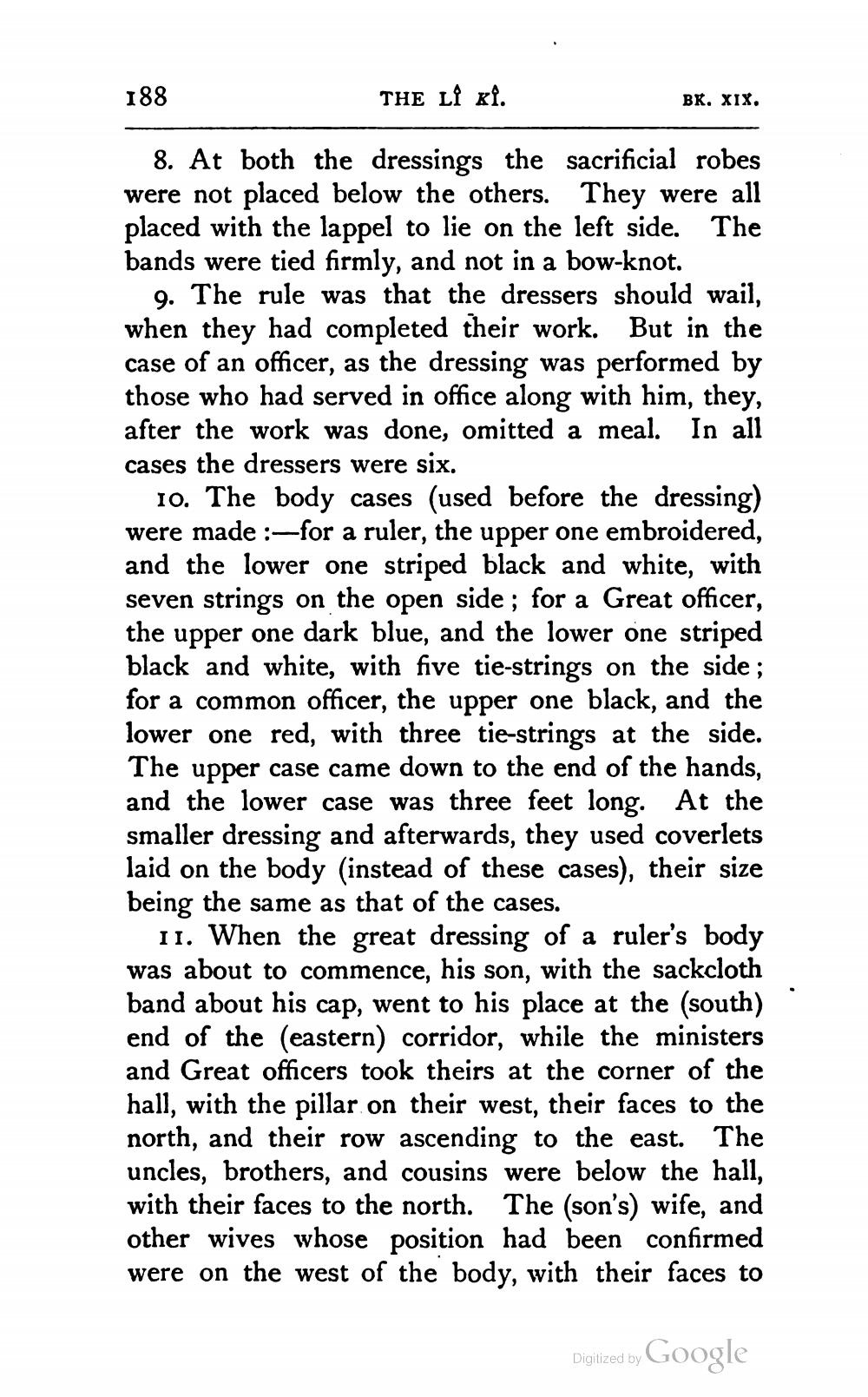________________
188
THE LÎ ki.
BK. XIX.
8. At both the dressings the sacrificial robes were not placed below the others. They were all placed with the lappel to lie on the left side. The bands were tied firmly, and not in a bow-knot.
9. The rule was that the dressers should wail, when they had completed their work. But in the case of an officer, as the dressing was performed by those who had served in office along with him, they, after the work was done, omitted a meal. In all cases the dressers were six.
10. The body cases (used before the dressing) were made :-for a ruler, the upper one embroidered, and the lower one striped black and white, with seven strings on the open side ; for a Great officer, the upper one dark blue, and the lower one striped black and white, with five tie-strings on the side ; for a common officer, the upper one black, and the lower one red, with three tie-strings at the side. The upper case came down to the end of the hands, and the lower case was three feet long. At the smaller dressing and afterwards, they used coverlets laid on the body (instead of these cases), their size being the same as that of the cases.
11. When the great dressing of a ruler's body was about to commence, his son, with the sackcloth band about his cap, went to his place at the (south) end of the eastern) corridor, while the ministers and Great officers took theirs at the corner of the hall, with the pillar on their west, their faces to the north, and their row ascending to the east. The uncles, brothers, and cousins were below the hall, with their faces to the north. The (son's) wife, and other wives whose position had been confirmed were on the west of the body, with their faces to
Digitized by Google




